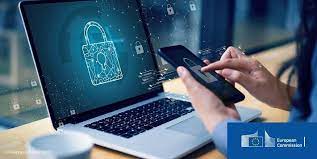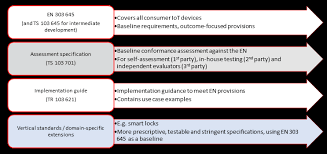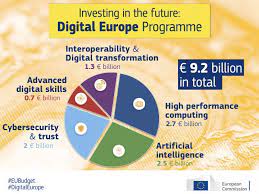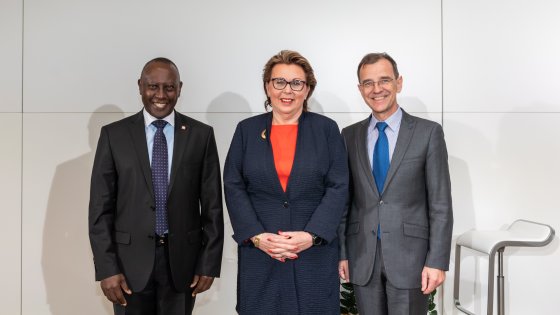Following its cartoon “Standards@Rail”, CEN & CENELEC conclude the European Year of Rail with a new campaign to share with the European citizens the importance of European standards in the daily life of trains and railways infrastructure.
In each video, railways experts of CEN/TC 256 ‘Railways applications’ and CLC/TC 9X ‘Electrical and electronic applications for railways’ present to the public a selection of European standard that directly contributes to a safe, efficient, and resilient railways network in Europe: from cybersecurity and wheels to driver's cab displays, aerodynamic or hydrogen refuelling. With these videos, the European citizens can better understand the role of these standards to overcome the current and future challenges met by the railways industry and operators to facilitate the everyday life of travellers and freight transport
he Commission has taken action to improve the cybersecurity of wireless devices available on the European market. As mobile phones, smart watches, fitness trackers and wireless toys are more and more present in our everyday life, cyber threats pose a growing risk for every consumer. The delegated act to the Radio Equipment Directive adopted today aims to make sure that all wireless devices are safe before being sold on the EU market. This act lays down new legal requirements for cybersecurity safeguards, which manufacturers will have to consider in the design and production of the concerned products. It will also protect citizens' privacy and personal data, prevent the risks of monetary fraud as well as ensure better resilience of our communication networks. The delegated act will be complemented by a Cyber Resilience Act, recently announced by President von der Leyen in the State of the Union speech, which would aim to cover more products, looking at their whole life cycle. Today's proposal as well as the upcoming Cyber Resilience Act follow up on the actions announced in the new EU Cybersecurity Strategy presented in December 2020.
ETSI has released the test specification for the existing ETSI EN 303 645, the world leading consumer IoT security standard. This test specification, ETSI TS 103 701, describes how a conformity assessment is performed in a structured and comprehensive way. This will allow supplier organizations such as manufacturers, vendors or distributers to assess the compliance of their devices against ETSI ETSI EN 303 645 in self-assessments or via testing labs. User organizations can also apply the test specification for in-house testing.
ETSI EN 303 645, released in June 2020, involved all stakeholders of the IoT cybersecurity landscape and was developed with industry, academics, testing institutes and international government bodies. As more consumer devices connect to the internet, the cybersecurity of the Internet of Things (IoT) has become a growing concern. The EN is designed to prevent large-scale, prevalent attacks against smart devices that cybersecurity experts see every day.
Today our smartphones and tablets are fundamental for citizens and hold a wide range of user data and apps. At the same time, security attacks have increased with malicious applications and network eavesdropping. To define security and assurance requirements for smart phones and tablets, mitigate potential risks and protect users, ETSI has released a world class standard called Consumer Mobile Device Protection Profile, ETSI TS 103 732. The specification identifies key security and privacy risks for user data and provides appropriate protection. The new ETSI standard specifies security requirements for consumer mobile devices. It ensures the protection of key user data such as photos, videos, user location, emails, SMS, calls, passwords for web services, and fitness related data.
The ETSI specification has a broad coverage of security features including cryptographic support, user data protection, identification and authentication, security management, privacy protection, resistance to physical attack, secure boot, and trusted communication channels.
The Commission has adopted three work programs for the Digital Europe Programme, outlining the objectives and specific topic areas that will receive a total of €1.98 billion in funding. This first set of work programs includes strategic investments that will be instrumental in realizing the Commission's goals in making this Europe's Digital Decade. The Digital Europe Program aims to bolster Europe's technological sovereignty and bring digital solutions to market for the benefit of citizens, public administrations, and businesses.
The main work program, worth €1.38 billion, will focus on investment in the areas of artificial intelligence (AI), cloud and data spaces, quantum communication infrastructure, advanced digital skills, and the wide use of digital technologies across the economy and society, until the end of 2022. Alongside this main work program, the Commission published two specific work programs: the first one focuses on funding around cybersecurity, with a budget of €269 million until the end of 2022; and the second one focuses on the set-up and operation of the network of European Digital Innovation Hubs, with a budget of €329 million, until the end of 2023.
Thirty years ago, the global economy was placed on a new footing in Vienna: the Vienna Agreement set the course for even closer co-operation and collaboration. What has changed since then? Fewer barriers to trade, more harmonized rules, and more room for innovation. Under the heading "From global to local: Joining forces to help global standards create local impact", the leaders of international standardization organizations such as CEN and ISO met again in Vienna on 11 October to further advance international co-operation. The Vienna Agreement was signed in Vienna 30 years ago. Its objective: ensure that European and international standards are not in conflict with each other, but that rather they are as consistent with each other as possible. The motto: "One standard, one test – accepted everywhere". Much has happened since then. Thanks to the Agreement, enterprises can rely on globally harmonized approaches to improving the quality of products and processes – there are uniform rules for measuring, testing and quantification of greenhouse gas emissions – parents can be confident that the packaging of drugs is child-resistant – the users of health apps can be sure of clear security levels for data protection and machinery manufacturers can use the same standards for exporting tractors to countries all over the world.











